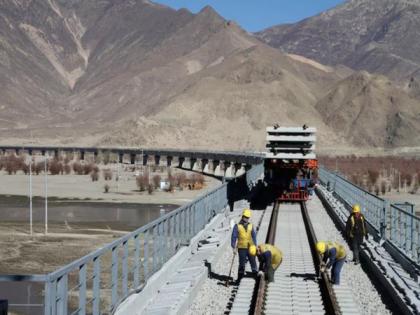China's lower Yarlung Tsangpo Dam could tip geopolitical scales
By ANI | Updated: August 9, 2025 19:34 IST2025-08-09T19:27:31+5:302025-08-09T19:34:52+5:30
Beijing [China], August 9 : China's aggressive push to construct the world's largest hydropower dam on the Yarlung Tsangpo ...

China's lower Yarlung Tsangpo Dam could tip geopolitical scales
Beijing [China], August 9 : China's aggressive push to construct the world's largest hydropower dam on the Yarlung Tsangpo is more than a developmental project; it's a strategic weapon in Beijing's escalating water war against South Asia, reports Borderlens.
Formally embedded in China's 14th Five-Year Plan and greenlit last December, the dam, now under active construction in Nyingchi City, Tibet, sits dangerously close to the Line of Actual Control (LAC) near Arunachal Pradesh. According to Borderlens, Chinese Premier Li Qiang announced its launch on July 19, hailing it as a cornerstone of the "West-to-East Electricity Transfer Project." But beneath the veneer of green energy lies a calculated geopolitical move.
The site is strategically located just before the river's "Great Bend," where it turns into India's Brahmaputra and Bangladesh's Jamuna. The project will generate an estimated 300 billion kWh annually, triple the output of the Three Gorges Dam, and involves five cascade dams, a cost of USD 170 billion, and possible river course modifications. Borderlens noted that such control over Tibet's waters could give Beijing the upper hand in any future confrontation with India.
Regional leaders are sounding the alarm. Arunachal Pradesh Chief Minister Pema Khandu warned Borderlens that the project is "a ticking water bomb" with existential risks for local tribes. Minister Ojing Tasing echoed the urgency: "China has already started... If we do not act now, we may suffer later."
The dangers aren't hypothetical. As Borderlens highlighted, the dam sits in a seismically active Himalayan zone. A structural failure, triggered by an earthquake, could unleash catastrophic floods across India, Bhutan, and Bangladesh. Beyond physical risks, Beijing's unilateral control of a transboundary river undermines water security for hundreds of millions downstream.
Environmentalists and Tibetan advocates interviewed by Borderlens stress that this project follows a familiar pattern: massive state-backed infrastructure in Tibet is used not only to extract resources, but to tighten political control. Forced relocations, loss of ancestral lands, and cultural erasure have accompanied similar projects in the past.
Disclaimer: This post has been auto-published from an agency feed without any modifications to the text and has not been reviewed by an editor
Open in app